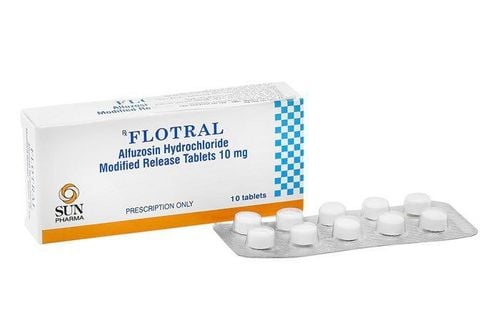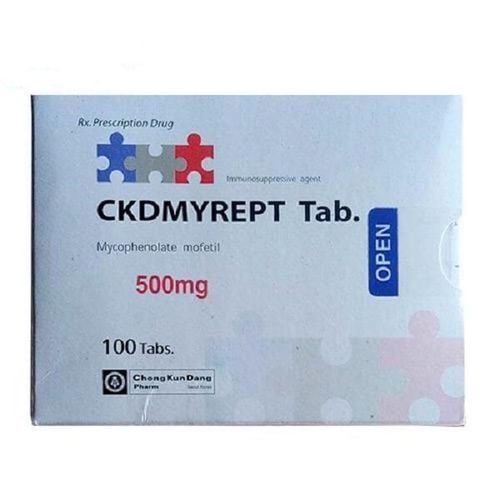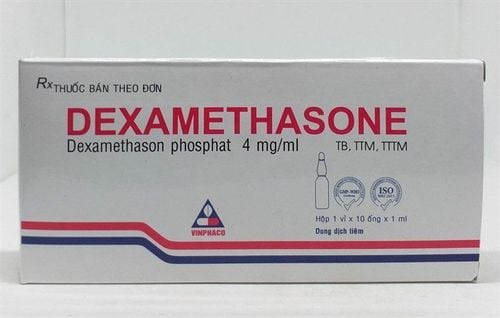This is an automatically translated article.
Zortress is an immunosuppressive drug used to prevent rejection in liver or kidney transplant patients. The article will provide information about the uses, doses and notes when using Zortress.
1. What is Zortress?
Zortress contains the active ingredient Everolimus, which belongs to the group of immunosuppressive drugs. The drug works by weakening the body's immune system to help the body accept the transplanted organ. Zortress is a prescription medicine used to prevent transplant rejection in people who have received a kidney or liver transplant. Zortress can be used with other drugs such as Cyclosporine, Tacrolimus, Corticosteroids to prevent transplant rejection.
2. Usage and dosage of Zortress
How to use:
Drink Zortress 2 times a day about 12 hours apart. Patients should swallow Zortress tablets whole with a glass of water, do not crush or chew the tablets. Zortress can be taken with or without food.
Dosage:
Dosage is based on medical condition, response to treatment and other medications the patient is taking. The following is a reference dose of Zortress in liver and kidney transplant patients:
Anti-rejection in liver transplant patients: Initially 1 mg twice daily (in combination with Tacrolimus and Corticosteroids), adjust maintenance dose if required for a period of 4 to 5 days based on serum concentrations, tolerability, and response to treatment. Anti-rejection in renal transplant patients: Initially 0.75 mg twice daily (in combination with Cyclosporin and Corticosteroids), adjust maintenance dose if necessary at intervals of 4 to 5 days based on drug levels in serum, tolerability, and patient response. Patients with impaired renal function: No dose adjustment of Zortress is required in this patient. Patients with impaired liver function: Reduce the starting dose by 33-50% and adjust the maintenance dose according to the degree of liver impairment of the patient.
3. Contraindications to Zortress
Use of Zortress is contraindicated in patients with known hypersensitivity to Everolimus, other Rapamycin derivatives or any component of the formulation.
4. What are the side effects of Zortress?
Zortress can cause serious side effects, including:
Swelling under the skin, especially around the mouth, eyes and in the throat, angioedema, rash, itchy or painful skin Slow healing . Contact the doctor if the patient has any of the following symptoms: red, warm, or painful incision; the appearance of blood, fluid or pus at the incision site; open, swollen wound. Respiratory problems such as coughing, difficulty breathing, wheezing. In some patients, breathing problems can become severe and even lead to death. Increased cholesterol, protein in the urine, changes in kidney function. Your doctor may order blood and urine tests to monitor your cholesterol and kidney function. Increased risk of serious infections. Zortress weakens the body's immune system and affects its ability to fight infections. Patients taking Zortress are more likely to develop viral, bacterial, and fungal infections. Patients should contact their doctor if they have unexplained fever or chills. Blood clotting problems, blood clots in the blood vessels of the kidneys, decreased red blood cell count Constipation, diarrhea, abdominal pain Diabetes: Tell the doctor if the patient experiences frequent urination, extreme thirst or more hungry. Infertility: Zortress may affect male fertility and female fertility.
5. Notes when using Zortress
Angioedema: Concomitant use of drugs known to cause angioedema (eg, ACE inhibitors) may increase the risk.
Bone marrow suppression: There have been reports of reductions in hemoglobin, neutrophils, platelets and lymphocytes in patients receiving Zortress. Monitor blood counts at baseline, every 6 months during the first year of treatment and annually thereafter.
Edema: Generalized edema (including peripheral edema and lymphedema) and local fluid accumulation (eg, pericardial effusion, pleural effusion, ascites) may occur.
Thrombosis: An increased risk of renal artery and venous thrombosis has been reported in renal transplantation, usually within the first 30 days after renal transplantation. Hepatic artery thrombosis has been reported within 30 days of transplantation and often results in graft loss or death. Do not use Everolimus before 30 days after a liver transplant.
Hypersensitivity: Serious hypersensitivity reactions such as anaphylaxis, dyspnea, flushing, chest pain and angioedema have been reported in patients receiving Zortress.
Infections: Everolimus has immunosuppressive properties, which may increase susceptibility to infections. Everolimus can cause bacterial, fungal, and viral infections, including opportunistic infections.
Malignancy: Immunosuppressive use can lead to the development of malignancies, including lymphoma and skin cancer. The risk is related to treatment intensity and duration of treatment. To reduce the risk of skin cancer, limit exposure to the sun and ultraviolet rays, wear protective clothing, and use an effective sunscreen.
Effects on Metabolism: Hyperglycemia, hyperlipidemia, and hypertriglyceridemia have been reported in some patients receiving Zortress. Higher serum concentrations of Everolimus are associated with an increased risk of hyperlipidemia. Elevated serum glucose may alter the need for insulin and/or oral drug therapy in patients with diabetes. The risk of new-onset diabetes is increased when Everolimus is used after a transplant.
Increased serum creatinine, renal failure and proteinuria have been observed in patients receiving Everolimus. The risk of nephrotoxicity may be increased when used with calcineurin inhibitors (eg, Cyclosporin, Tacrolimus); Therefore, dosage of calcineurin inhibitors should be adjusted.
Pregnant women: Everolimus can harm an unborn baby if taken during pregnancy. There is limited information regarding the use of Everolimus during pregnancy and therefore should not be used in this population. Patients should use effective contraception during treatment and for 8 weeks after the last dose.
Lactating women: Everolimus is present in breast milk. Due to the potential for serious adverse reactions in nursing infants, the manufacturer does not recommend breastfeeding during treatment and for 2 weeks after the last dose.
6. Zortress drug interactions
Concomitant use of Zortress and certain drugs can cause drug interactions, alter the effectiveness of therapy and increase the risk of side effects. Here are some drug interactions to watch out for when using Zortress.
Some drugs can affect the elimination of Everolimus from the body and affect how it works, including azole antifungals (Itraconazole, Ketoconazole), macrolide antibiotics (Clarithromycin, Erythromycin), inhibitors HIV and HCV protease inhibitors (Atazanavir, Ritonavir), Rifamycins (such as Rifabutin, Rifampin), Telithromycin,...
Tuberculosis vaccine: Immunosuppressants may increase the side effects of TB vaccines, specifically The risk of infection from the vaccine may be increased. Therefore, concomitant use of TB vaccine with Zortress is contraindicated.
Cyclosporine may increase the serum concentration of Everolimus. When Cyclosporin and Everolimus are used concomitantly after transplantation, a lower dose of Cyclosporin must be used. Closely monitor serum concentrations of both Everolimus and Cyclosporin when co-administered.
Above is general information about Zortress drug. If you need more information or have any questions about your medication, you should contact your doctor or pharmacist.
Please dial HOTLINE for more information or register for an appointment HERE. Download MyVinmec app to make appointments faster and to manage your bookings easily.













